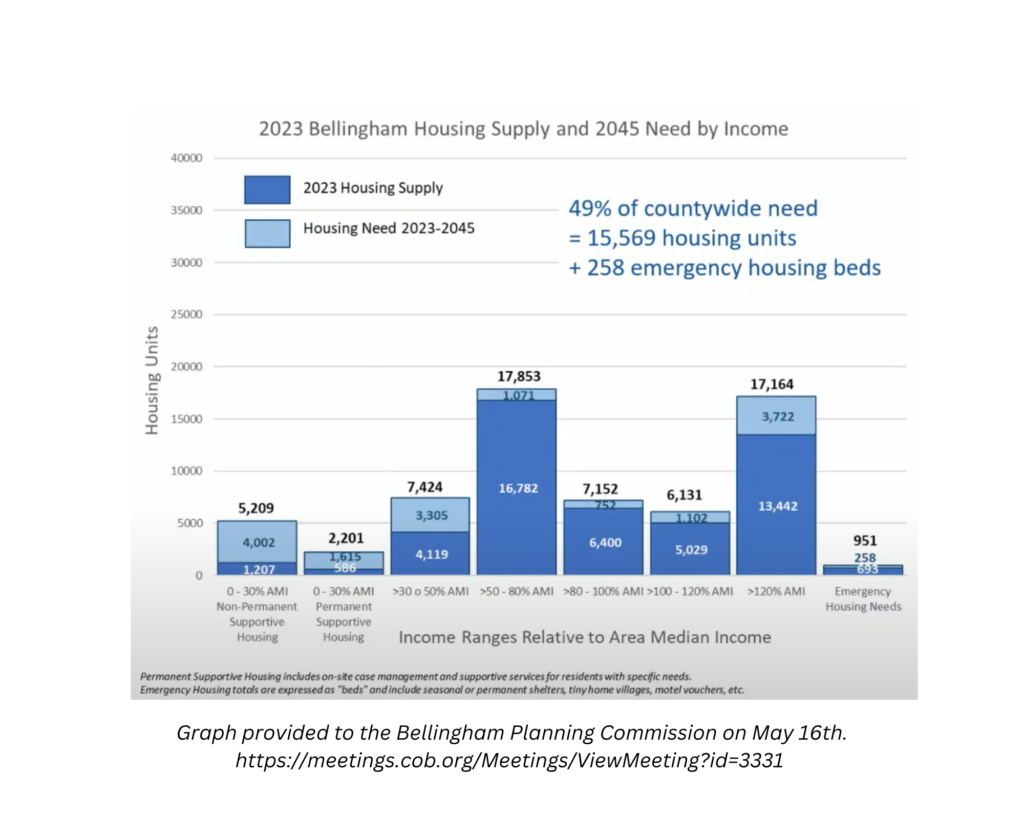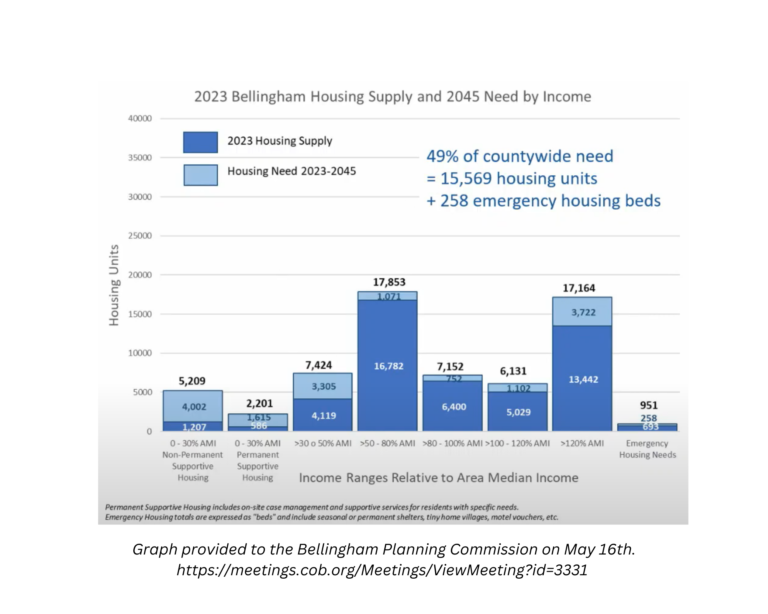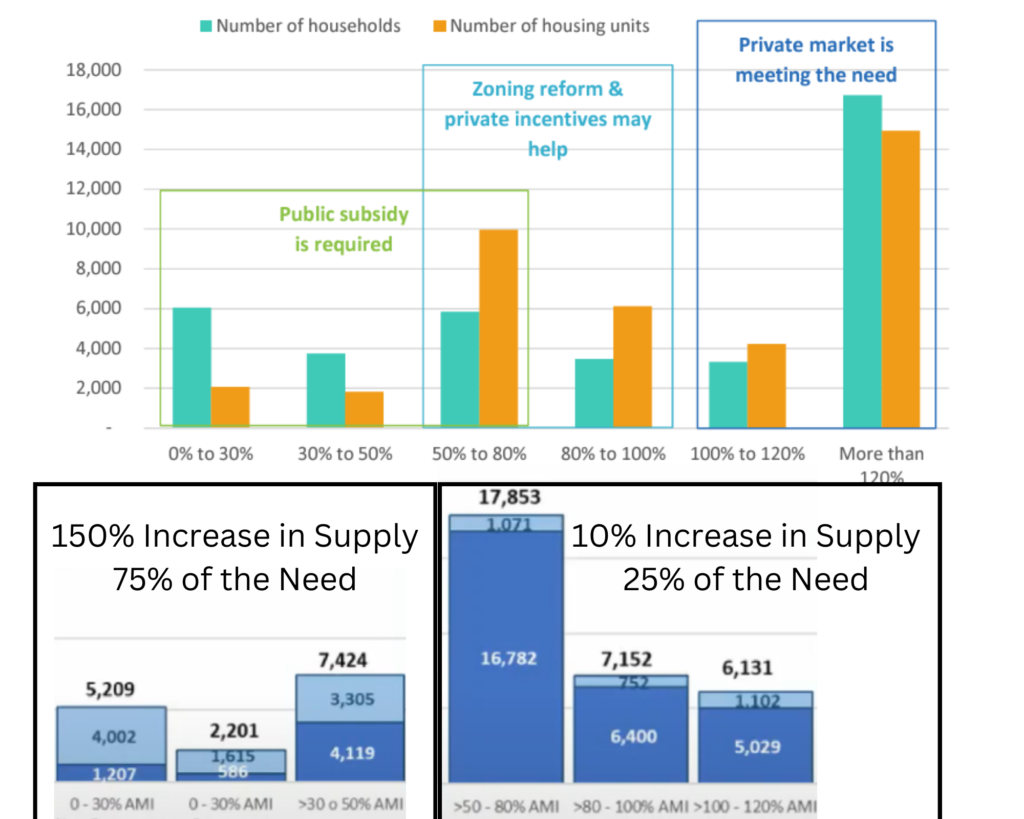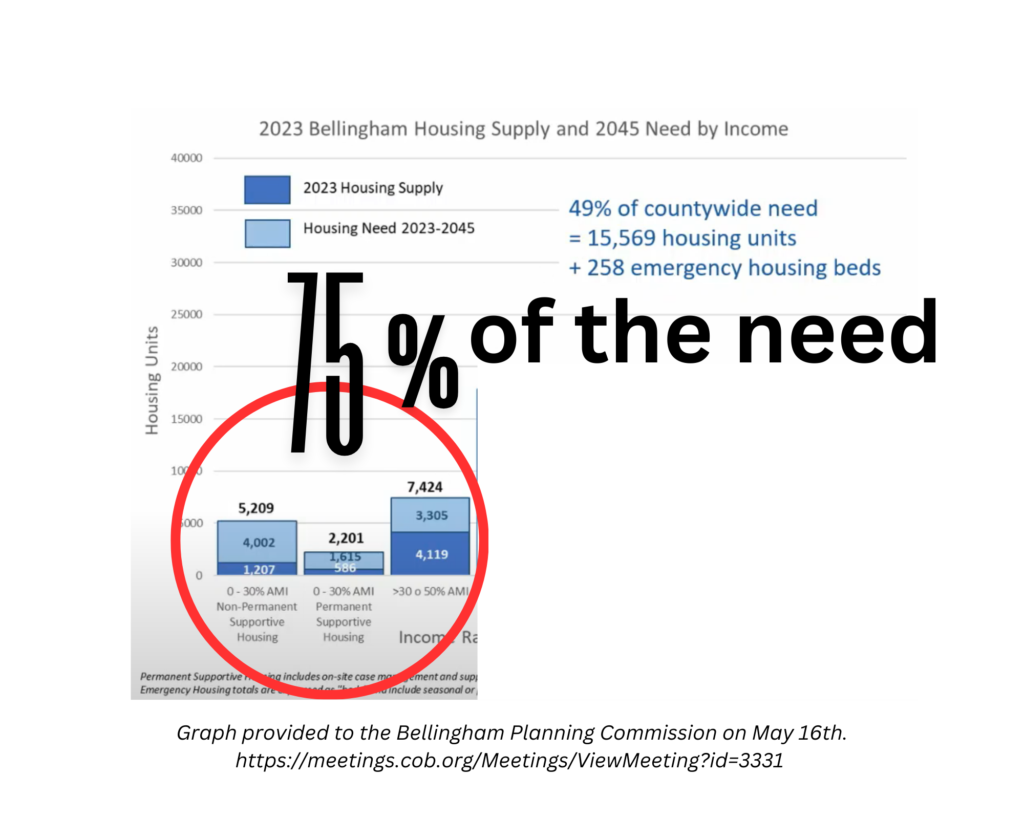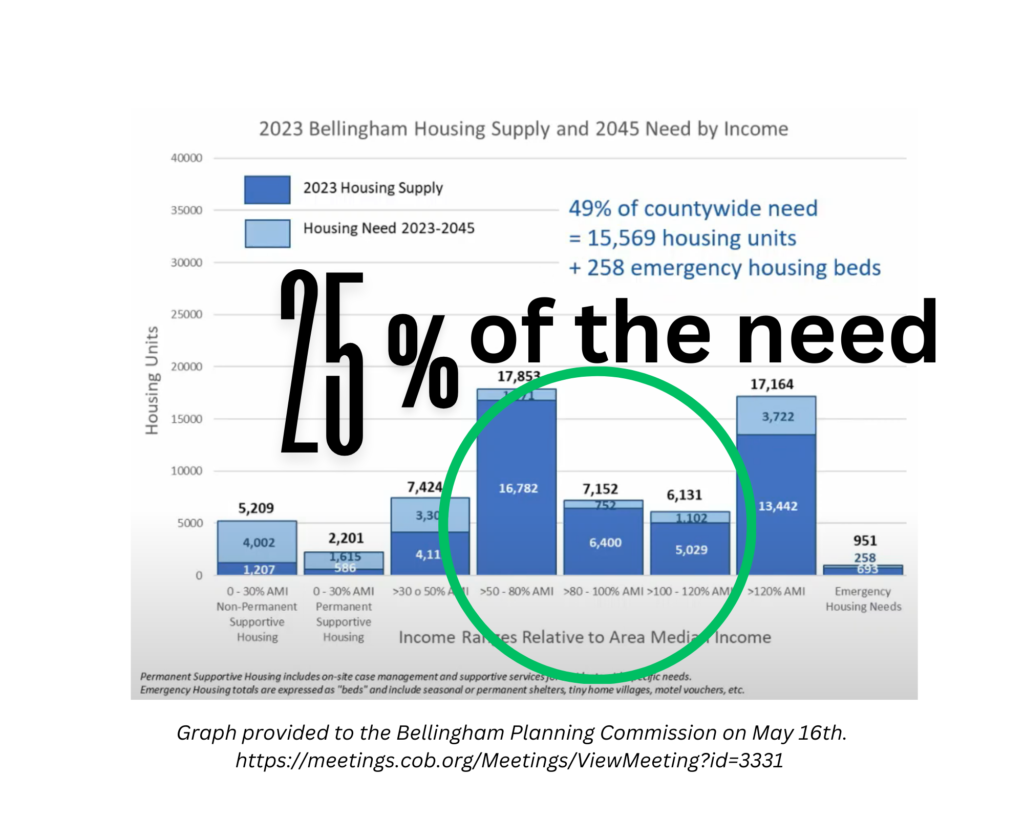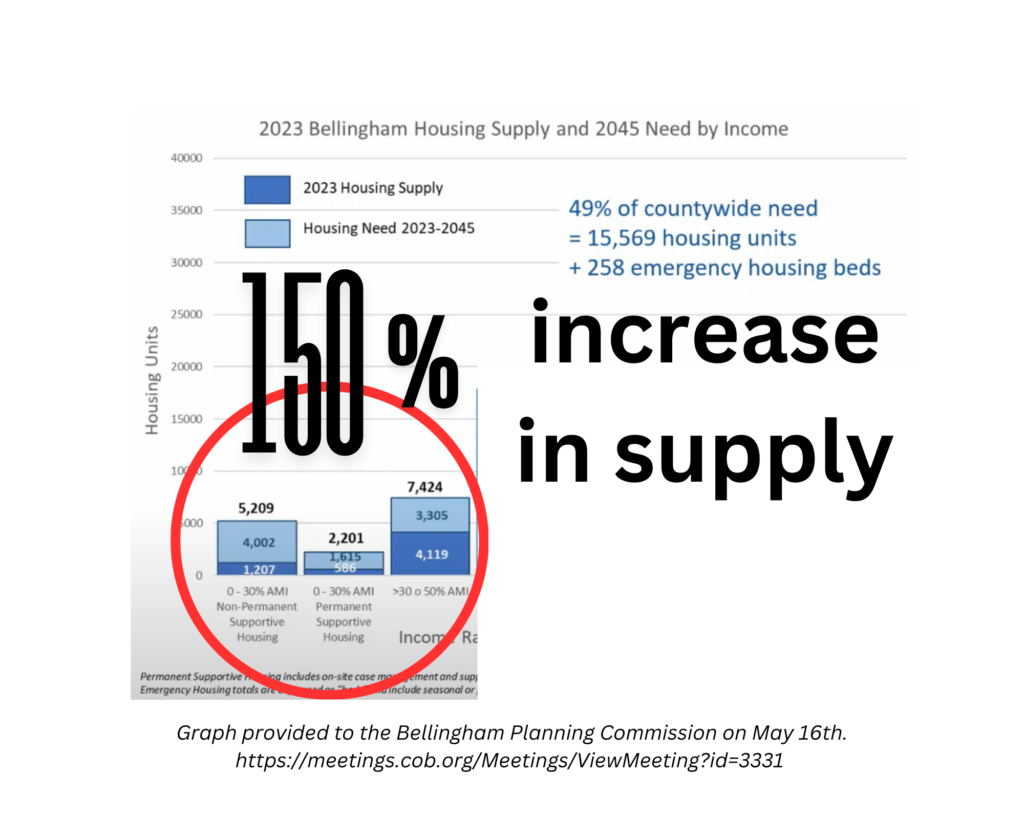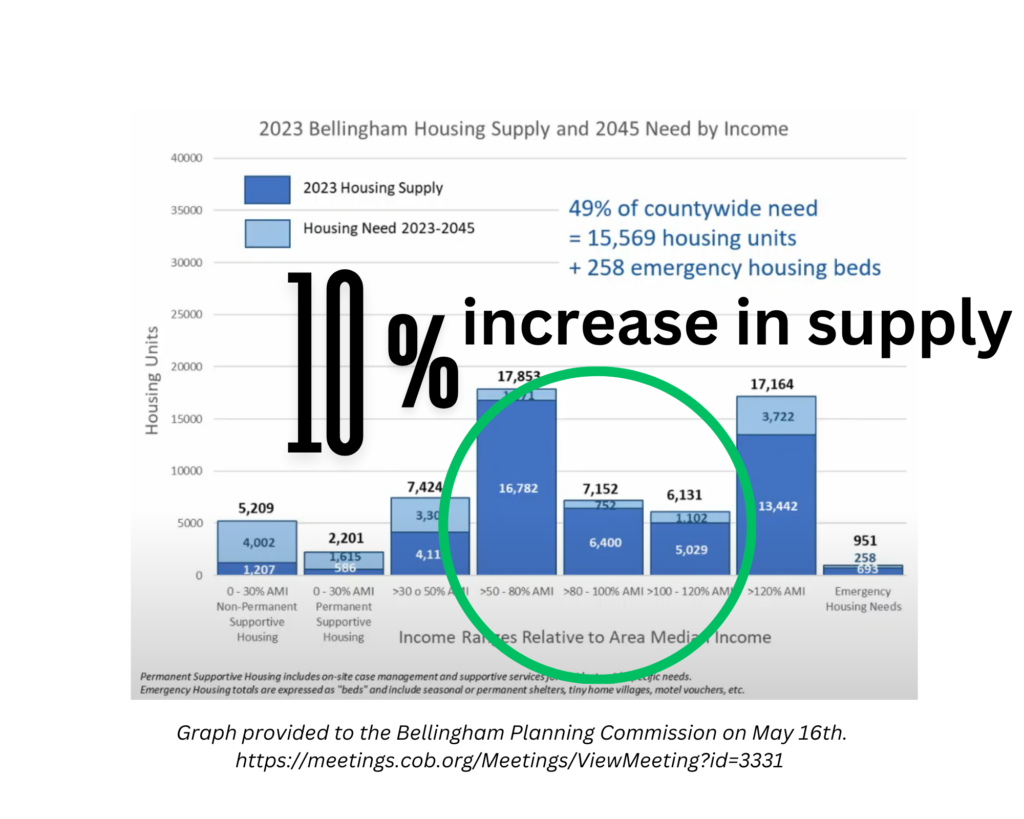The real estate market is a moment in time. A moment where supply and demand of that which is, has a price. Variables involved may include quantity of desired housing, the state of the economy, how much land is available for future housing, popularity of the area, zoning and the list goes on. The real estate market in Bellingham in 2024 is not the same as it was in 2011.
The economy has only gotten better (with a few hiccups), more land is available due to House Bill 1110 (Missing Middle), Bellingham is increasingly popular, and zoning has changed or is changing. For some, too fast (NIMBY). and for others, not fast enough (YIMBY).

There are some things that can be done about the challenges of high housing prices for both home owners and renters. Building can increase, the Washington Legislature can pass Missing Middle bills that allow 4 plexes in single family zoned areas, ADUs can be legalized, and we can change zoning density to a higher level with the creation of Urban Villages.
Economics breaks down when supply
cannot keep up with demand
In some places, this increase in supply could be all that is needed. The thought goes, “more housing, more competition, lower prices”. Basic Econ 101. This would be the case if two things happened. 1) All of the supply needed, became available at the same time, and 2) people stopped moving into the area.
Sadly, the first is impossible. And, for the second, as noted at the top, Bellingham has become popular. People are moving here, and not just anyone. People with money.
What you see in the graph above is the current housing supply in dark blue. You’ll see that in the future we’ll need a lot of housing for those making more than 120% AMI (rich’er’), and ALOT of housing for neighbors making 0-50% AMI (the not so rich’er’).
When there is not enough supply for the >120% folks, they trickle down into the 100-120% AMI bracket and so on. This is the opposite of planner’s usual theory of trickle down housing, where housing costs are supposed to go down as the units get older, and thus low income housing supply increases over time. Instead, true trickle down housing is that, without enough supply for the most well off, those residents take supply that is needed by residents who don’t make as much as they do. And the process continues down the line, of course ‘rich’er’ never move too many bars to the left.
Some might say that this is a perfect argument for Missing Middle Housing. Once again maybe if the left side of the graph wasn’t so dire. But it is, and thus missing middle will do nothing for the housing crisis in Bellingham. MIssing middle housing will come, due to market forces and already implemented laws.
All conversations must now be about the 0-50% or the words are useless.
Let's dig in
The real estate market, a part of Capitalism, always caters to the more well off. Housing for >120% and higher will be taken care of by market forces. They are incredibly profitable to build, and they are affordable for those who can afford them (>120%). Nothing to be done by local governments.
So we have trickle down housing demand. We also have trickle up (?) demand. See the incredible need of housing supply for the residents who make 0-50% AMI? Let me help.
With such an incredible demand for housing by the 0-50% crowd, many of these households are paying more than they can afford and thus are living in housing that is for the 50-80% and even the 80-100% residents. IF an increase in supply of housing stock for 0-50% is created, the folks who live in 50-100% housing but cannot afford it, will move into the 0-50% housing, actually decreasing the need for the missing middle housing type.
This is when proponents of the missing middle tell me that “the missing middle is not defined by the bars in the middle of the graphs”. Yes, and noted. Missing Middle are a type of housing that bridge the gap between single family detached units, and apartments.
The income bars that happen to be in the middle of the graph happen to be the bars that missing middle housing falls under. Easy, right?
What does this mean?
It means, if we continue on our current path, our community will suffer, because we will have focused on the wrong housing types. There is momentum for Missing Middle, which we don’t need, and the market will allow for most well off to move here.
You say that I haven’t proven that we don’t need missing middle? Ok. Here you go.
Needed housing supply in the next 20 years must come, 75% from 0-50% AMI, and only 25% from missing middle. More incredibly, the 0-50% AMI housing supply must increase 150%, while the missing middle housing stock must only increase by 10%.
Organizations like the Whatcom Builders Alliance, sorry…Whatcom Housing Alliance, are focusing on the wrong housing. The numbers from the City prove this. So why are they focusing on it? Because its easy, feel good housing, and it helps those who have the time and the energy to pat them on the back and tell them how great they are.
When you’re in a housing crisis, which Bellingham is, housing is not easy, and if it is, maybe its the wrong housing.
So what is the right housing?
Housing for the 0-50% is what we need to focus on. And that is enough. There is a reason we need 150% more supply of it in the next 20 years. Its not easy. Next graph please…
This graph, from the Bellingham Consolidated Plan, shows why it is so hard to create housing for 0-50%. The private market does not allow for it naturally, and thus just demanding Middle Housing types, ADUs or no parking minimums does no good.
0-50% housing stock, requires subsidization (Bellingham Home Fund), tax incentives (MFTE), or zoning reform. Subsidies and incentives alone will not get us to a 150% supply of housing for our work force residents. The constant addition of Zoning Reform is REQUIRED.
What does zoning reform look like? Its taking advantage of every change that the city of Bellingham looks at to create affordable housing for the 0-50% AMI residents in our community who are hurting.
Next time you speak with a representative from the Whatcom Housing Alliance, a City Council Member, Planning Staff, or a Planning Commissioner, ask them how missing middle without subsidy, reform or incentives is to help our community instead of just the investor.
Next installment – Gifts vs Incentives

